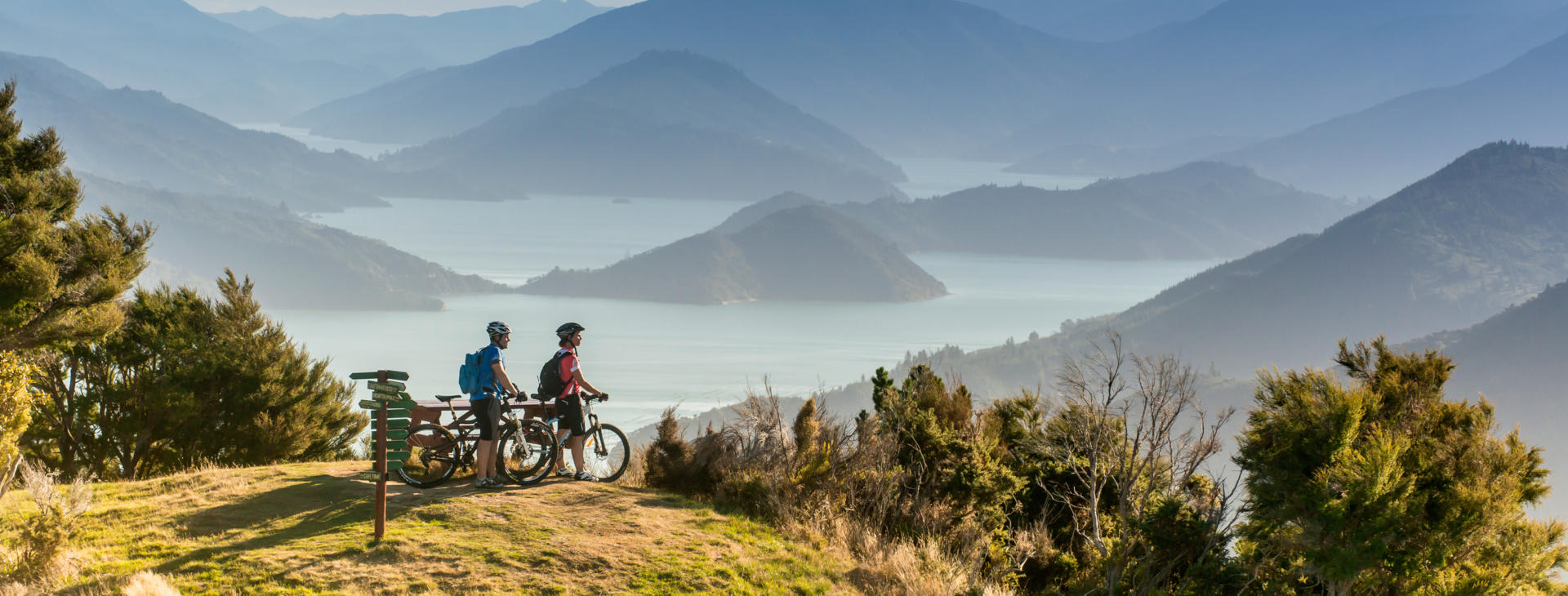
The Marlborough region covers the north-eastern corner of the South Island and has one of the lowest population densities of all New Zealand’s regions. Stretching roughly 200 km from the northern-most tip of D’Urville Island in Cook Strait to almost as far south as Kaikoura, nearly three quarters of the population of 47,000 people live in the neighbouring settlements of Blenheim, Renwick and Picton. The region is rugged and mountainous in the south and west with occasional penetration by little used roads to service extensive farms known as stations. The Molesworth Station, at 1820 sq km, rates as the largest in the country. The broad Wairau River plain separates these areas from the 4000 square kilometres of fractured sea-drowned river valleys that make up the Marlborough Sounds. Almost half of the ferry journey between the North and South Islands is spent passing through the scenic passages of this area.

Marlborough’s climate is relatively mild and the more heavily populated Wairau Plains experience temperature extremes ranging from minus nine degrees in winter to 37 degrees during summer months, with sunnier and drier weather than national averages. The climate is ideal for grape growth and, although only recognised in the 1970s, the region now produces three quarters of New Zealand’s 270 million litre / two billion dollar annual wine output. No visit to Marlborough is complete without a road trip through the sounds along the Queen Charlotte Drive or a visit to the vineyards that produce some of the world’s finest Sauvignon Blanc wines. For those traveling by motorhome SH1 follows the east coast of the region from Picton to Kaikoura, while SH6 connects Blenheim with Nelson and SH63 heads inland along the Wairau Valley.
The Marlborough Sounds are an extensive area of steep river valleys that have been flooded by the ocean since the last ice age, creating a complex network of fjord-like sounds and islands with a total coastline of approximately 1500 km. They form a wonderful aquatic playground filled with sheltered anchorages and secluded holiday homes that are often only accessible by boat. Indeed Captain James Cook himself named and returned several times to his favoured Ship Cove near the seaward end of Queen Charlotte Sound during his first two Pacific voyages in the late 1760s and early 1770s. 250 years later, anyone completing a nationwide tour of New Zealand will get to appreciate the tranquility of the area as their ferry between Picton and Wellington spends an hour passing through Queen Charlotte Sound. With different tide times on each side of New Zealand and often narrow channels between the islands and peninsulas of the sounds, the country’s highest tidal flows of up to eight knots are recorded in some of the passages in the area. Despite the remoteness of much of the Marlborough Sounds, opportunities exist for those on independent road trips to incorporate a visit into their travels. Queen Charlotte Drive is a meandering scenic 35 km route between Picton and Havelock, with the option of a side trip to Anakiwa or Kenepuru Head providing further exposure to the beauty of the area and access to the 70 km Queen Charlotte Walking Track. A scenic mail boat cruise within Queen Charlotte Sound and its inlets is also available from Picton. Further afield and for those on longer itineraries, a rewarding stay awaits on the 150 sq km D’Urville Island after a ferry ride from French Pass at the northern extremity of the sounds.
Picton is a quaint township of a little over 4000 inhabitants at the head of Queen Charlotte Sound. It is the South Island’s terminus for up to ten daily ferry crossings between New Zealand’s two main islands. The town marks the start of SH1 in the South Island and is only a 25 minute drive from the Marlborough Region’s major town of Blenheim. Although often overlooked by the thousands of people who pass through each day heading to or from their ferry sailing, Picton has a thoroughly enjoyable harbour side district with relaxing cafes and restaurants. The waterfront includes the museum ship Edwin Fox, believed to be the world’s second oldest surviving wooden sailing vessel. Launched in 1853, she was used to transport early settlers from London to both New Zealand and Australia. Immediately to the east of the inner harbour lies the Victoria Domain with elevated views and a superb four hour return walk to the Snout at the tip a small peninsular. Picton and neighbouring Waikawa Bay have several holiday parks for those planning on staying a night before or after their ferry crossing.
Blenheim is an important provincial town and the largest centre of population in the Marlborough Region - its 31,000 inhabitants make up two thirds of the entire region’s population. The town provides a service base for the extensive sheep farming, mussel farming, salt production and grape growing industries of the region. In excess of 50 vineyards have transformed much of the surrounding countryside in recent decades, and winery visits either in your motorhome, by hired bicycle or with a professional tour company are one of the key local attractions. Nearby at Omaka, the Aviation Heritage Museum contains a truly remarkable collection of World War One aircraft that rates as one of the best in the world. Strongly supported by Wellington film director and producer Peter Jackson, the displays of aircraft from both world wars benefit from the same life-like diorama talent as was employed on the Lord of the Rings sets. The adjacent Classic Car Museum is also filled with fascinating automotive nostalgia.